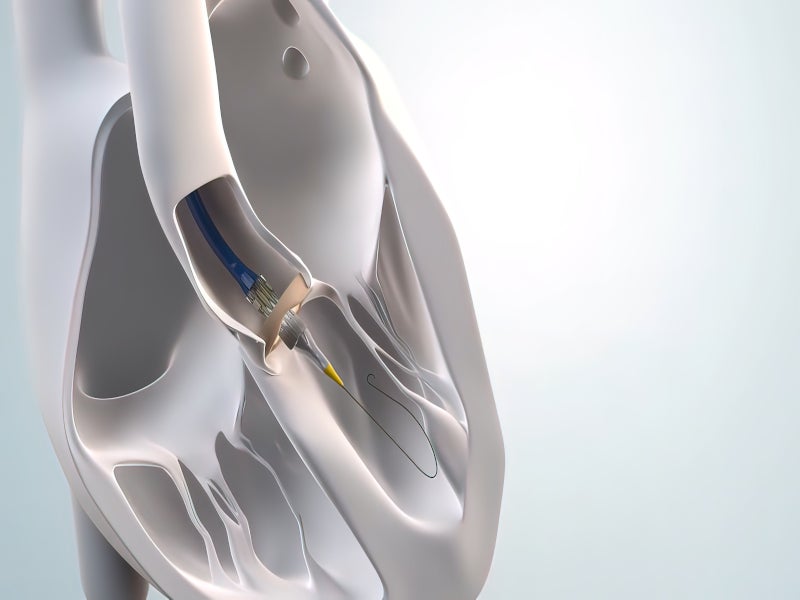Navitor™ is a next-generation transcatheter aortic valve implantation (TAVI) system developed by Abbott, a medical device company based in the US, to treat people with severe aortic stenosis, a common and life-threatening heart valve disease.
Approved by the US Food and Drug Administration (FDA) in January 2023, it is an addition to Abbott’s comprehensive structural heart transcatheter portfolio, which includes the Portico™ TAVI system and MitraClip™ transcatheter edge-to-edge repair (TEER) system and offers less invasive options for the treatment of heart diseases to physicians and patients.
Navitor is a minimally invasive substitute for surgery for aortic stenosis patients who are at high or extremely high risk for open-heart surgery. The Navitor TAVI system received the CE Mark in Europe to treat aortic stenosis in May 2021. The device was launched in India in December 2022.
Navitor TAVI system design and features
The Navitor TAVI system is indicated for transcatheter delivery in patients with symptomatic severe native aortic stenosis. It is designed for immediate functionality, continuous stability and no rapid pacing.
The system comprises the Navitor valve and FlexNav™ delivery system. The valve comes in 23mm, 25mm, 26mm, 27mm and 29mm sizes. A 29mm Navitor valve features a 21F equivalent integrated sheath diameter. It has 36 cells in total, of which nine cells are in the annulus section of the stent.
Navitor valve details
The Navitor valve features a curved aortic stent with NaviSeal™ Cuff smart paravalvular leak (PVL) sealing technology, which actively synchronises with the cardiac cycle. Intra-annular leaflets within the native valve help to seal and manage PVL by self-expanding, filling the gaps between the annulus and the valve caused by calcification. The exclusive Linx™ anti-calcification (AC) technology of the valve extends its performance by preventing calcification in four different ways.
Its intelligent design offers optimised radial force, improving expansion, anchoring, stability and sealing across all sizes. Large frame cells and intra-annular valve design help to preserve access to coronary vessels for future intervention. The atraumatic aortic stent cells of the valve reduce the risk of injury to biological structures. Tissue ingrowth and healing are completed within three months of valve implantation.
FlexNav delivery system details
FlexNav facilitates the implantation of the Navitor valve in blood vessels with a diameter of equal to or more than 5mm. The delivery system has a working length of 107cm.
It has a recapturable, repositionable and retrievable design with 14F and 15F equivalent integrated sheath diameters. The working length of the integrated sheath is 30cm.
The low profile and highly flexible catheter offers excellent deliverability by allowing easy access to small vessels and tortuous patient anatomies.
It features a flexible capsule with a hydrophilic coating, which reduces friction and glides through the vasculature. The atraumatic nosecone of the FlexNav reduces the risk of vascular complications and calcium dislodgement, while the stability layer offers controlled deployment and accurate valve placement.
Haemodynamics
The self-expanding valve and non-tapered stent of the Navitor TAVI system offer haemodynamic stability for a calm and controlled deployment. The large effective orifice areas (EOAs) along with the non-tapered stent results in single-digit gradients, leading to improved cardiac function, long-term durability and minimal prosthesis-patient mismatch.
Clinical study on Navitor TAVI system
According to data presented at EuroPCR 2022 from a multi-centre, international, single-arm study, the Navitor TAVI system with active NaviSeal Cuff demonstrated improved outcomes at one year for patients with severe, symptomatic aortic stenosis who were at high or extremely high risk of surgery.
The study showed a procedural success rate of 97.5% with a 70.2% rate of no or trace PVL and a 28.8% rate of mild PVL through one year. It also demonstrated the effective functioning of the sealing cuff in managing PVL, and only 4.2% of all-cause mortality occurred in one year. It also showed a mean gradient of 7.5mmHg through one year.
Abbott is also conducting an open-label, single-group, interventional clinical study, named VANTAGE, to evaluate the safety and effectiveness of the Navitor valve in patients with severe, symptomatic aortic stenosis with intermediate or low risk of surgical mortality.
The study will also examine the safety and effectiveness of the valve in a valve-in-valve application, in which the Navitor valve will be implanted in patients with symptomatic heart disease due to the inadequate function of a surgical bioprosthetic aortic valve.
A total of 590 patients will be recruited for the study, who will undergo transcatheter aortic valve replacement (TAVR) with the Navitor valve and FlexNav delivery system. The primary endpoint of the study is combined all-cause mortality or disabling stroke in a time frame of 12 months.





